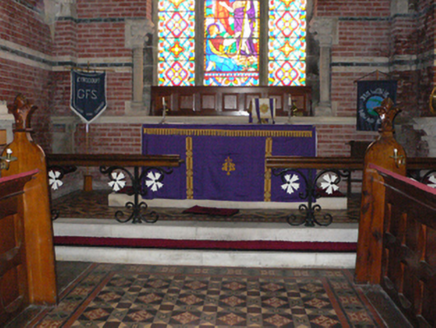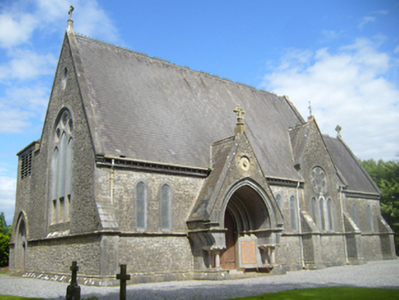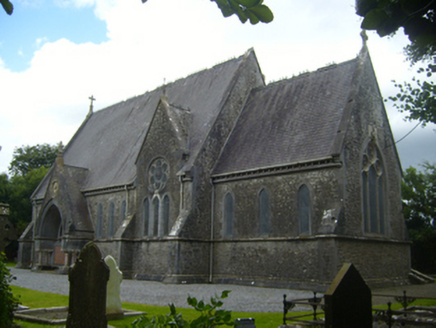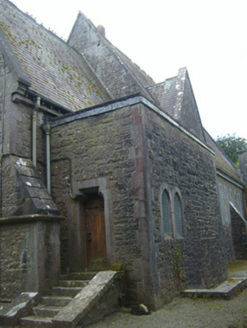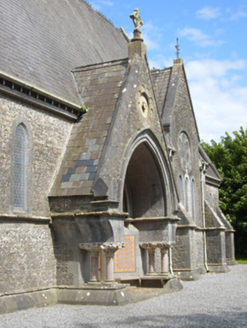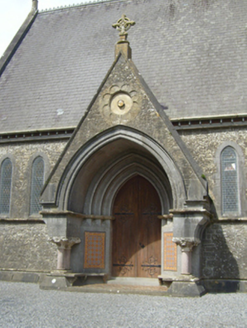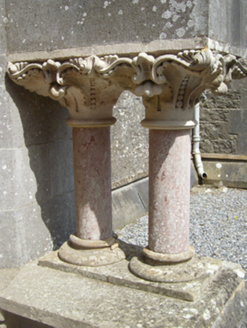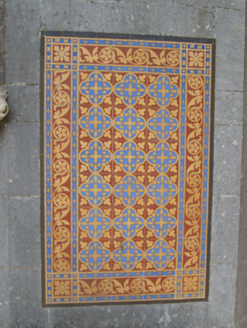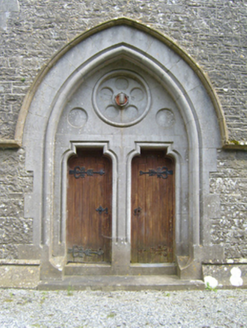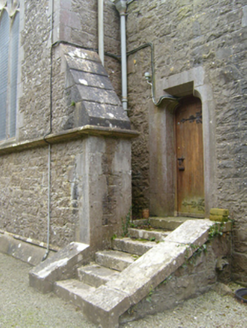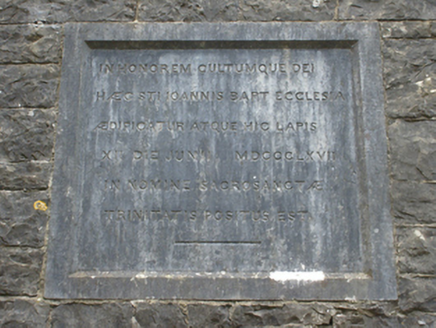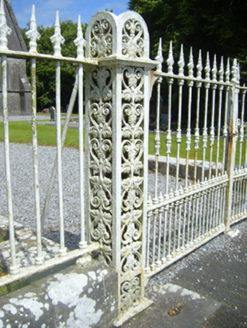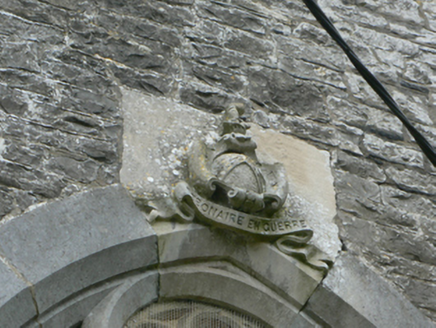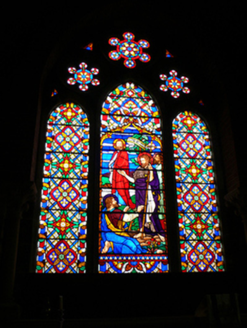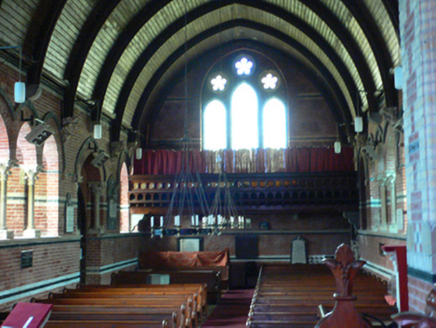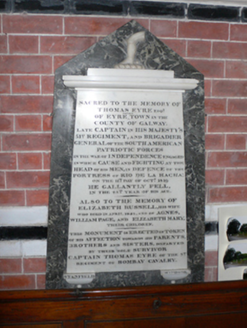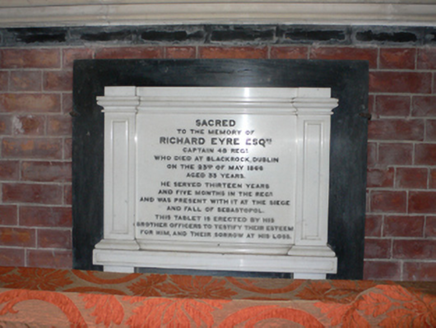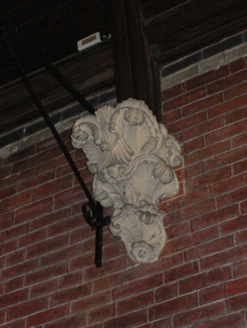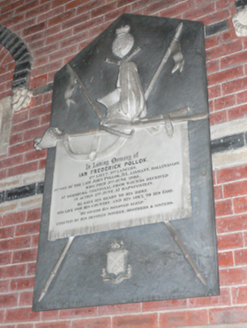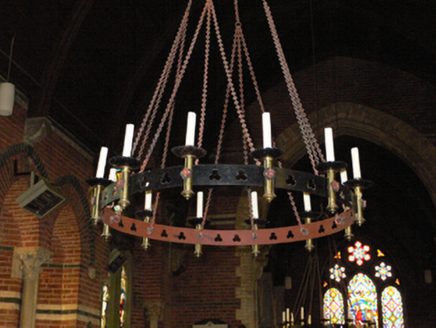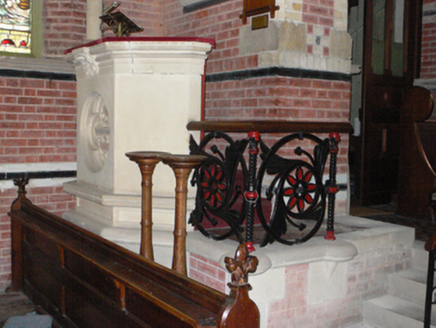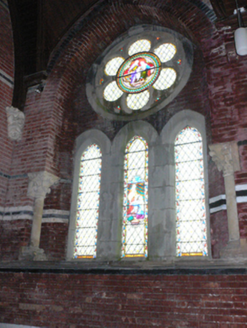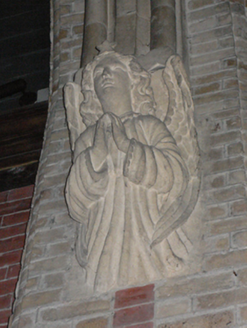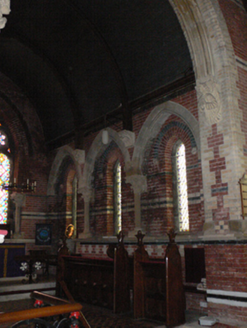Survey Data
Reg No
30338002
Rating
Regional
Categories of Special Interest
Architectural, Artistic, Historical, Social
Previous Name
Saint John's Church (Donanaghta)
Original Use
Church/chapel
In Use As
Church/chapel
Date
1865 - 1870
Coordinates
191199, 216819
Date Recorded
05/08/2009
Date Updated
--/--/--
Description
Freestanding Church of Ireland church, dated 1867, comprising four-bay nave with single-bay chancel, square-plan unfinished two-stage tower to west end of north elevation, single-bay vestry to north elevation of chancel, gable-fronted open porch to south elevation and gabled false transepts to north and south elevations. Pitched slate roof to nave and chancel having cast-iron rainwater goods and some ridge cresting, cut limestone copings and cross finials and cut limestone eaves course. Flat roof to vestry and to tower. Gabled rendered bellcote to tower. Cast-iron finial to south transept. Dressed limestone walls with cut limestone quoins, and moulded plinth course and sill course. Dressed limestone buttresses to corners and flanking false transepts, having cut limestone quoins. Cut limestone plaque to east elevation of tower, cut limestone roundel to entrance porch. Square-headed opening to second stage of west elevation of tower with timber louvers. Cut chamfered limestone surrounds to all window openings. Pointed-arch opening to chancel, having triple lancet stained-glass window with sexfoil oculi overhead and with limestone moulding to point of arch. Eyre coat of arms over exterior of window. Sexfoil oculi and triple lancet openings to each false transept, with leaded stained-glass windows. Pointed-arch opening to west end, having triple lancet stained-glass window with cinquefoil oculi overhead, and elliptical opening above. Lancet openings to nave and chancel, some having stained glass. Paired lancet openings to north elevation of vestry. Pointed-arch opening to porch with carved limestone surround and hood-moulding, and paired marble colonettes with cut limestone plinth having decorative carved Portland stone capitals and cut limestone dosserets forming jambs of entrance arch. Pointed-arch recessed arch opening to inner side of porch with double-leaf timber battened doors having decorative cast-iron hinge details, flanked by tiled panels to wall with fleur-de-lys motifs. Limestone bench under each panel. Tiled floor to entrance. Pair of shouldered-arch openings having timber battened doors to west elevation of tower, set within pointed-arch cut limestone surround with cut limestone roundel to tympanum. Limestone hood-moulding over pointed arch. Limestone step to entrance. Shouldered-arch opening to east elevation of vestry, having timber battened door with chamfered cut limestone surround, and limestone steps. Openings to vestry underground, accessed via flight of limestone steps. Highly ornate interior has pointed ceiling with timber boarding supported on pointed-arch timbers in turn supported on elaborately carved stone corbels. Walls are of red brick with bands of yellow and black brick. Windows have outer arch of black brick voussoirs. Taller windows flanked by carved stone colonettes. Polychrome tiled floor. Carved stone font and wide variety of stone, marble and brass plaques to nave. Choir area has organ, carved timber choir stalls, carved marble pulpit with steps, latter having decorative cast-iron railing. Metal chandeliers to nave and choir. Carved marble lectern to nave. Battened timber doors to nave, leading to vestry and to tower stairway. Stairway to tower has decorative wrought-iron railing to cantilevered stone steps. Church set within graveyard with lawns to front of site. Wrought-iron double-leaf gate flanked by decorative cast-iron square-plan piers, wrought-iron railings on cut limestone plinths to site boundary. Decorative timber gate to east leading to lands of Eyrecourt Castle.
Appraisal
This elegant Gothic Revival church is notable for its asymmetrical form which is enhanced and enlivened by pointed arch openings and oculi. The elaborate highly decorative entrance porch adds depth and interest to the entrance elevation. Designed by William Martin, it is an illustrative example of late nineteenth-century ecclesiastical architecture, the surrounding graveyard and wall plaque adding context. The false transepts are a notable feature, having gables which rise above the eaves course in the manner of a cruciform-plan church, while not projecting beyond the nave walls. The continuous impost course which also serves as a sill course is an indication of the considerable care involved in the design. The interior is highly elaborate. Its brick walls are very unusual for Ireland, and they are enhanced by the polychrome banding. A large variety of high-quality furnishings and ornately embellished structural elements makes Eyrecourt church one of the finest in County Galway. The plentiful wall plaques, commemorating members of the Eyre and other families of Eyrecourt, are god examples of work in various media.
